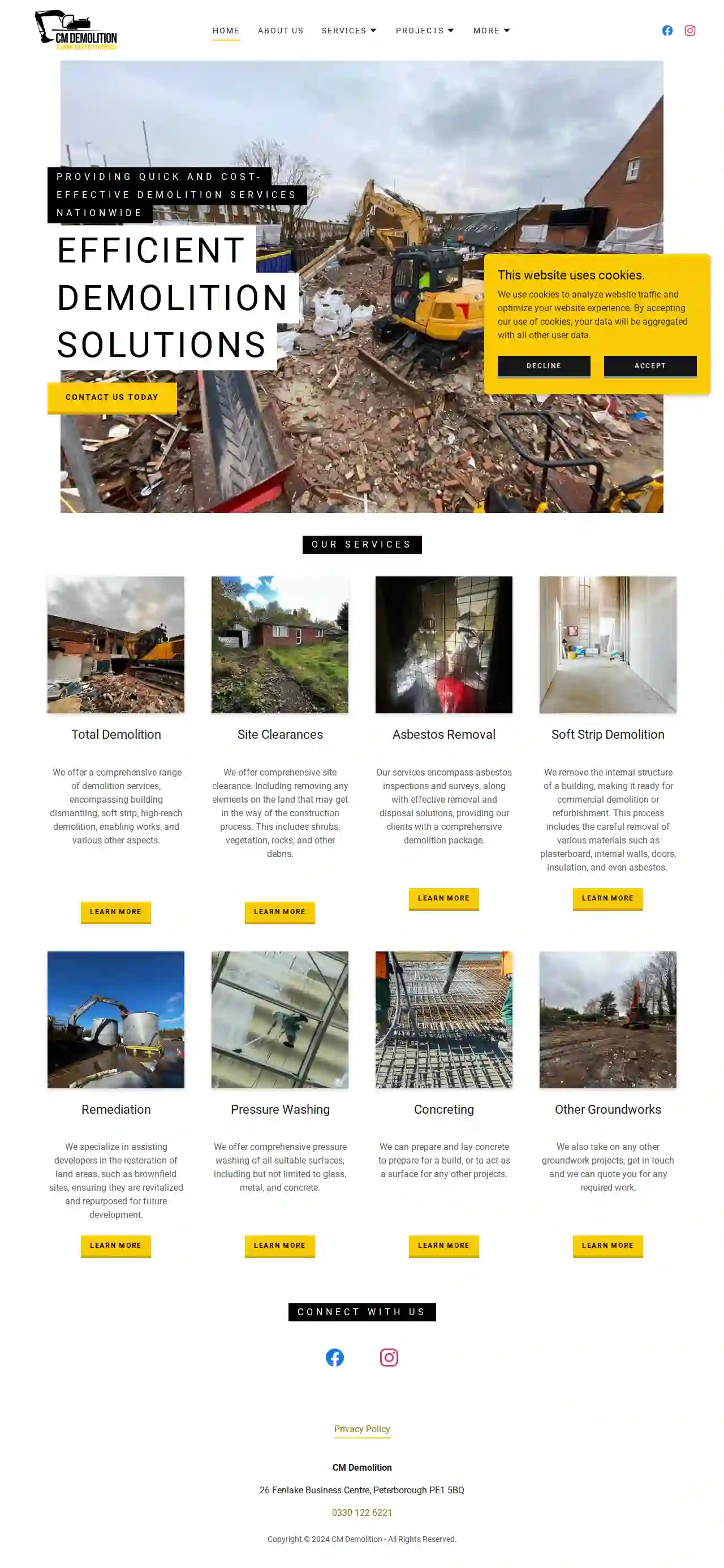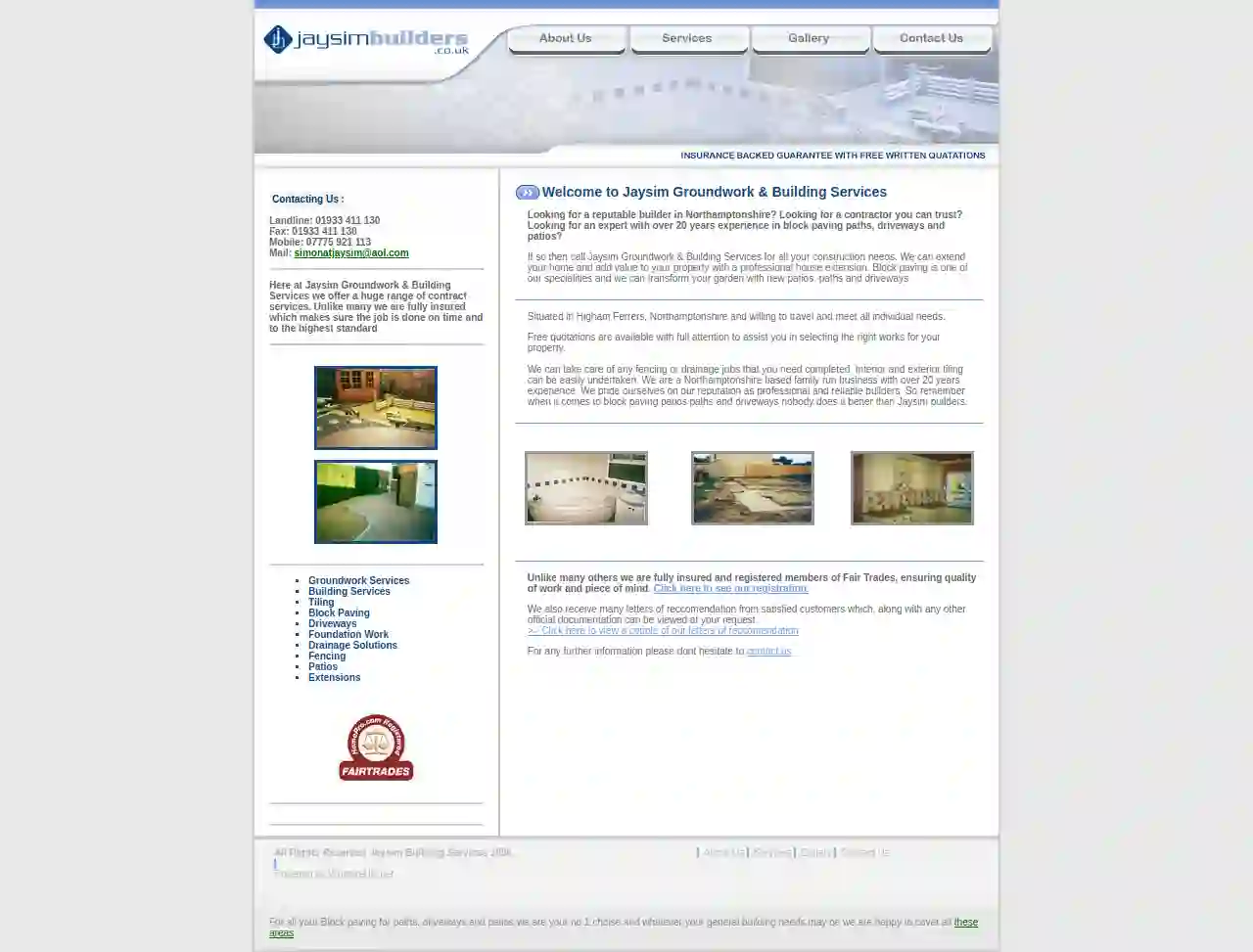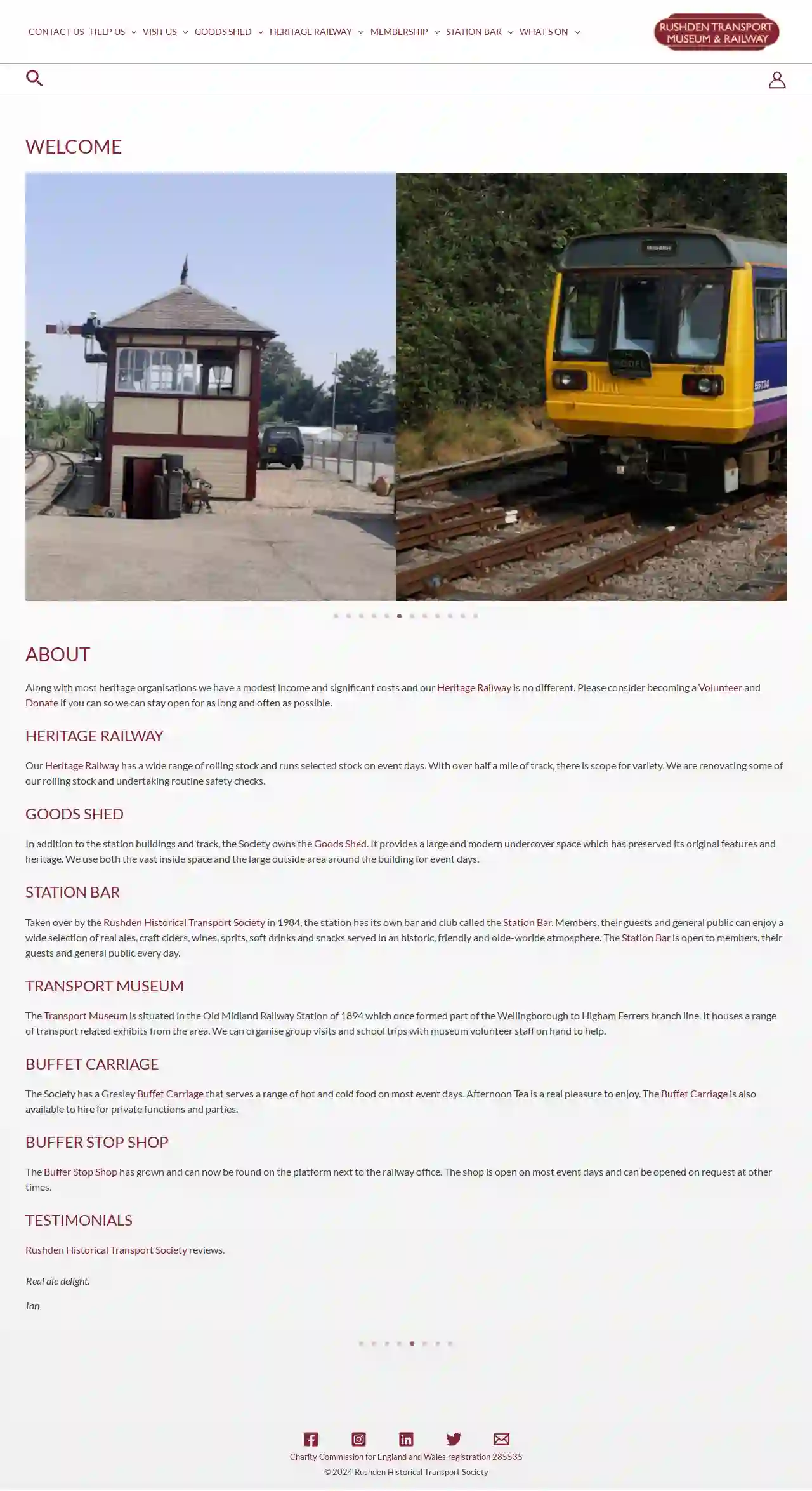Dirt Contractors Rushden
Find the best Dirt Hauling in Rushden
Receive multiple Dirt Contractors quotes for your project today! Compare profiles, reviews, accreditations, portfolio, etc... and choose the best service.

CM Demolition Ltd
515 reviews26 Fenlakes Business Centre, Peterborough, PE1 5BQ, GBOur History Founded in 2022, CM Demolition has been providing top-quality demolition services to clients in the Peterborough area and beyond. Our team of experienced professionals works across the UK, and is committed to safety, efficiency, and customer satisfaction. Our Services At CM Demolition, we offer a wide range of demolition services, including residential and commercial demolition, site preparation, recycling and waste removal, and more. No matter the size or scope of your project, we have the expertise and equipment to get the job done right. Our Process From initial consultation to project completion, CM Demolition is dedicated to providing a seamless and stress-free experience for our clients. We work closely with you to understand your specific needs and requirements, and we use cutting-edge technology and equipment to ensure efficient and precise demolition work.
- Services
- Why Us?
- Our Team
- Gallery
Get Quote
DBS Demolition Services Ltd
55 reviews54 Singer Way, Kempston, MK42 7AF, GBDBS Demolition Services Ltd DBS Demolition Services Ltd is a family run demolition company with over 30 years of experience and knowledge on delivering a successful service. Based in Bedfordshire, DBS Demolition Services Ltd was established in 2007.
- Services
- Why Us?
- Gallery
Get Quote
Jaysim Groundwork & Building Services
51 reviews26 Handcross Way, Higham Ferrers, Northamptonshire, NN10 8AE, GBWelcome to Jaysim Groundwork & Building Services Looking for a reputable builder in Northamptonshire? Seeking a contractor you can trust? Need an expert with over 20 years of experience in block paving paths, driveways, and patios? If so, call Jaysim Groundwork & Building Services for all your construction needs. We can extend your home and add value to your property with a professional house extension. Block paving is one of our specialties, and we can transform your garden with new patios, paths, and driveways. Based in Higham Ferrers, Northamptonshire, we are willing to travel and meet all individual needs. Free quotations are available with full attention to assist you in selecting the right works for your property. We can handle any fencing or drainage jobs you need completed. Interior and exterior tiling can be easily undertaken. We are a Northamptonshire-based family-run business with over 20 years of experience. We pride ourselves on our reputation as professional and reliable builders. So remember, when it comes to block paving patios, paths, and driveways, nobody does it better than Jaysim builders. Unlike many others, we are fully insured and registered members of Fair Trades, ensuring quality of work and peace of mind. Click here to see our registration. We also receive many letters of recommendation from satisfied customers, which, along with any other official documentation, can be viewed at your request. > Click here to view a couple of our letters of recommendation For any further information, please don't hesitate to contact us.
- Services
- Why Us?
- Gallery
Get Quote
Rushden Historical Transport Society & Goods Shed
4.6422 reviewsRushden, GBWELCOME Along with most heritage organisations we have a modest income and significant costs and our Heritage Railway is no different. Please consider becoming a Volunteer and Donate if you can so we can stay open for as long and often as possible. HERITAGE RAILWAY Our Heritage Railway has a wide range of rolling stock and runs selected stock on event days. With over half a mile of track, there is scope for variety. We are renovating some of our rolling stock and undertaking routine safety checks. GOODS SHED In addition to the station buildings and track, the Society owns the Goods Shed. It provides a large and modern undercover space which has preserved its original features and heritage. We use both the vast inside space and the large outside area around the building for event days. STATION BAR Taken over by the Rushden Historical Transport Society in 1984, the station has its own bar and club called the Station Bar. Members, their guests and general public can enjoy a wide selection of real ales, craft ciders, wines, sprits, soft drinks and snacks served in an historic, friendly and olde-worlde atmosphere. The Station Bar is open to members, their guests and general public every day. TRANSPORT MUSEUM The Transport Museum is situated in the Old Midland Railway Station of 1894 which once formed part of the Wellingborough to Higham Ferrers branch line. It houses a range of transport related exhibits from the area. We can organise group visits and school trips with museum volunteer staff on hand to help. BUFFET CARRIAGE The Society has a Gresley Buffet Carriage that serves a range of hot and cold food on most event days. Afternoon Tea is a real pleasure to enjoy. The Buffet Carriage is also available to hire for private functions and parties. BUFFER STOP SHOP The Buffer Stop Shop has grown and can now be found on the platform next to the railway office. The shop is open on most event days and can be opened on request at other times.
- Services
- Why Us?
- Accreditations
- Testimonials
- Gallery
Get Quote
Over 3,630+ Excavation Contractors in our network
Our excavation pros operate in Rushden & surroundings!
ExcavationHQ has curated and vetted the Best Excavation Pros near Rushden. Find a top & trustworthy business today.
Frequently Asked Questions About Dirt Contractors
- Designated Disposal Facilities: Contact your local waste management authority or search online for designated dirt and debris disposal facilities in your area. They accept various types of soil and construction materials.
- Recycling Centers: Some recycling centers accept clean fill dirt, concrete, or brick for reuse in other construction projects.
- Donation: If the dirt is clean and suitable for gardening or landscaping, consider donating it to community gardens, schools, or neighbors with landscaping projects.
- Spring and Fall: Generally considered the optimal seasons in many regions, as the weather is typically mild and the ground is workable.
- Summer: Can be suitable if the weather isn't excessively hot and dry, but ensure adequate watering to prevent soil from drying out.
- Winter: Often challenging due to frozen ground, snow, and potential for delays. However, some contractors may be available for deliveries if conditions permit.
- Online Directories: Utilize online directories like ExcavationHQ that specialize in connecting homeowners and businesses with qualified contractors. You can filter your search by location, service type, and read reviews from previous customers.
- Referrals: Ask friends, family, neighbors, or colleagues for recommendations based on their experiences with dirt contractors.
- Local Building Supply Stores: Inquire at local building supply stores, as they often have connections with contractors in the area.
- Online Reviews: Check online review platforms like Google My Business, Yelp, and Angie's List for insights into contractor reputations and customer feedback.
- Clean Fill: Consists of uncontaminated soil, rock, or gravel, free from organic matter, debris, or hazardous substances. Suitable for most construction and landscaping projects.
- Structural Fill: A compacted granular fill, typically gravel, crushed stone, or a mixture of both, used for structural support and drainage. Ideal for foundations, roadways, and retaining walls.
- Engineered Fill: A specifically designed and blended soil mix with controlled properties, such as compaction, drainage, or bearing capacity, tailored for particular applications.
- Unsuitable Fill: Materials like topsoil, organic matter, or contaminated soil that are not suitable for structural fill due to their potential for decomposition, settlement, or environmental concerns.
What is the best way to dispose of excess dirt?
What is the best time of year to have dirt delivered?
How do I find a reputable dirt contractor near me?
What are the different types of fill dirt?
What is the best way to dispose of excess dirt?
- Designated Disposal Facilities: Contact your local waste management authority or search online for designated dirt and debris disposal facilities in your area. They accept various types of soil and construction materials.
- Recycling Centers: Some recycling centers accept clean fill dirt, concrete, or brick for reuse in other construction projects.
- Donation: If the dirt is clean and suitable for gardening or landscaping, consider donating it to community gardens, schools, or neighbors with landscaping projects.
What is the best time of year to have dirt delivered?
- Spring and Fall: Generally considered the optimal seasons in many regions, as the weather is typically mild and the ground is workable.
- Summer: Can be suitable if the weather isn't excessively hot and dry, but ensure adequate watering to prevent soil from drying out.
- Winter: Often challenging due to frozen ground, snow, and potential for delays. However, some contractors may be available for deliveries if conditions permit.
How do I find a reputable dirt contractor near me?
- Online Directories: Utilize online directories like ExcavationHQ that specialize in connecting homeowners and businesses with qualified contractors. You can filter your search by location, service type, and read reviews from previous customers.
- Referrals: Ask friends, family, neighbors, or colleagues for recommendations based on their experiences with dirt contractors.
- Local Building Supply Stores: Inquire at local building supply stores, as they often have connections with contractors in the area.
- Online Reviews: Check online review platforms like Google My Business, Yelp, and Angie's List for insights into contractor reputations and customer feedback.
What are the different types of fill dirt?
- Clean Fill: Consists of uncontaminated soil, rock, or gravel, free from organic matter, debris, or hazardous substances. Suitable for most construction and landscaping projects.
- Structural Fill: A compacted granular fill, typically gravel, crushed stone, or a mixture of both, used for structural support and drainage. Ideal for foundations, roadways, and retaining walls.
- Engineered Fill: A specifically designed and blended soil mix with controlled properties, such as compaction, drainage, or bearing capacity, tailored for particular applications.
- Unsuitable Fill: Materials like topsoil, organic matter, or contaminated soil that are not suitable for structural fill due to their potential for decomposition, settlement, or environmental concerns.